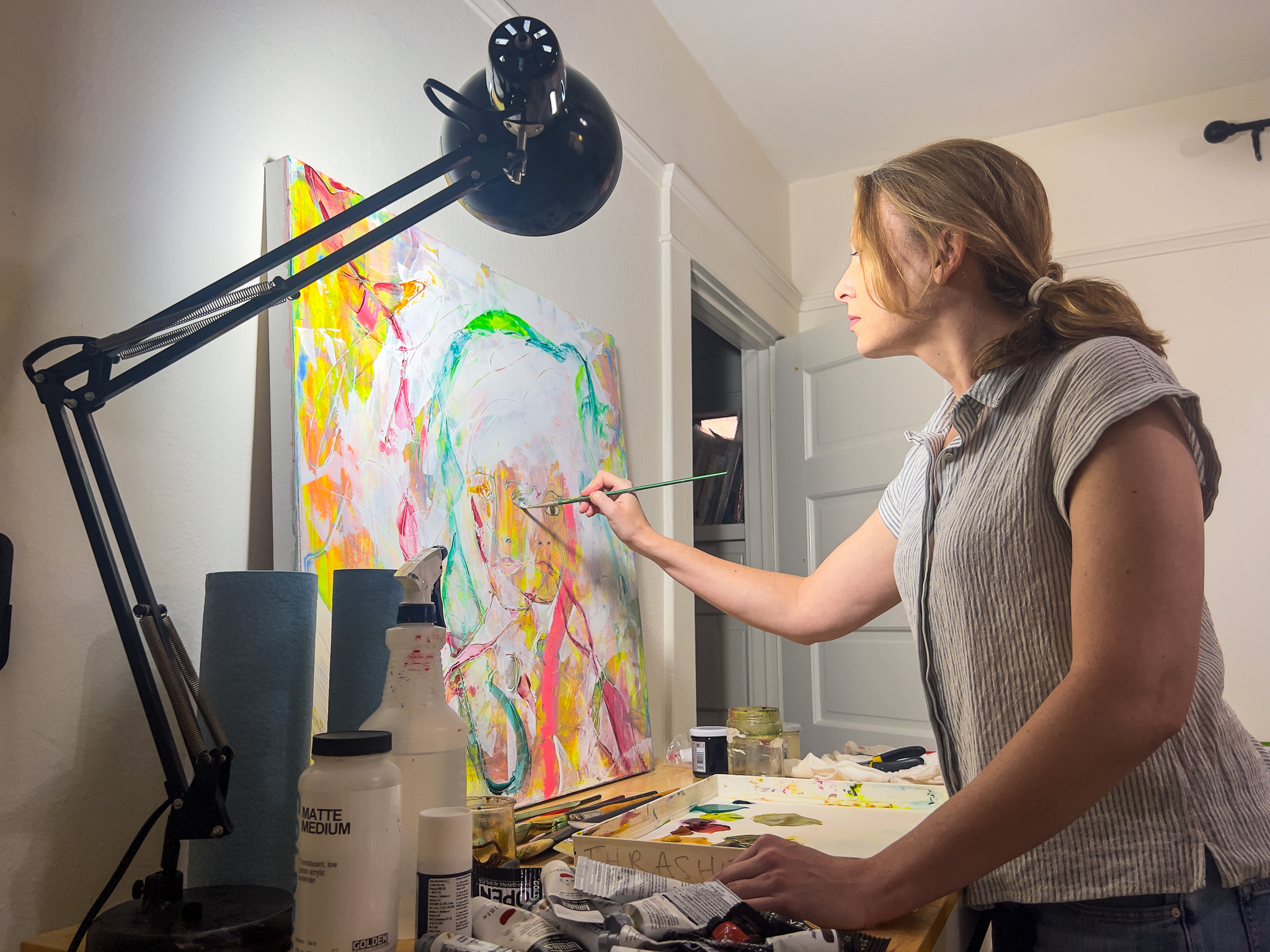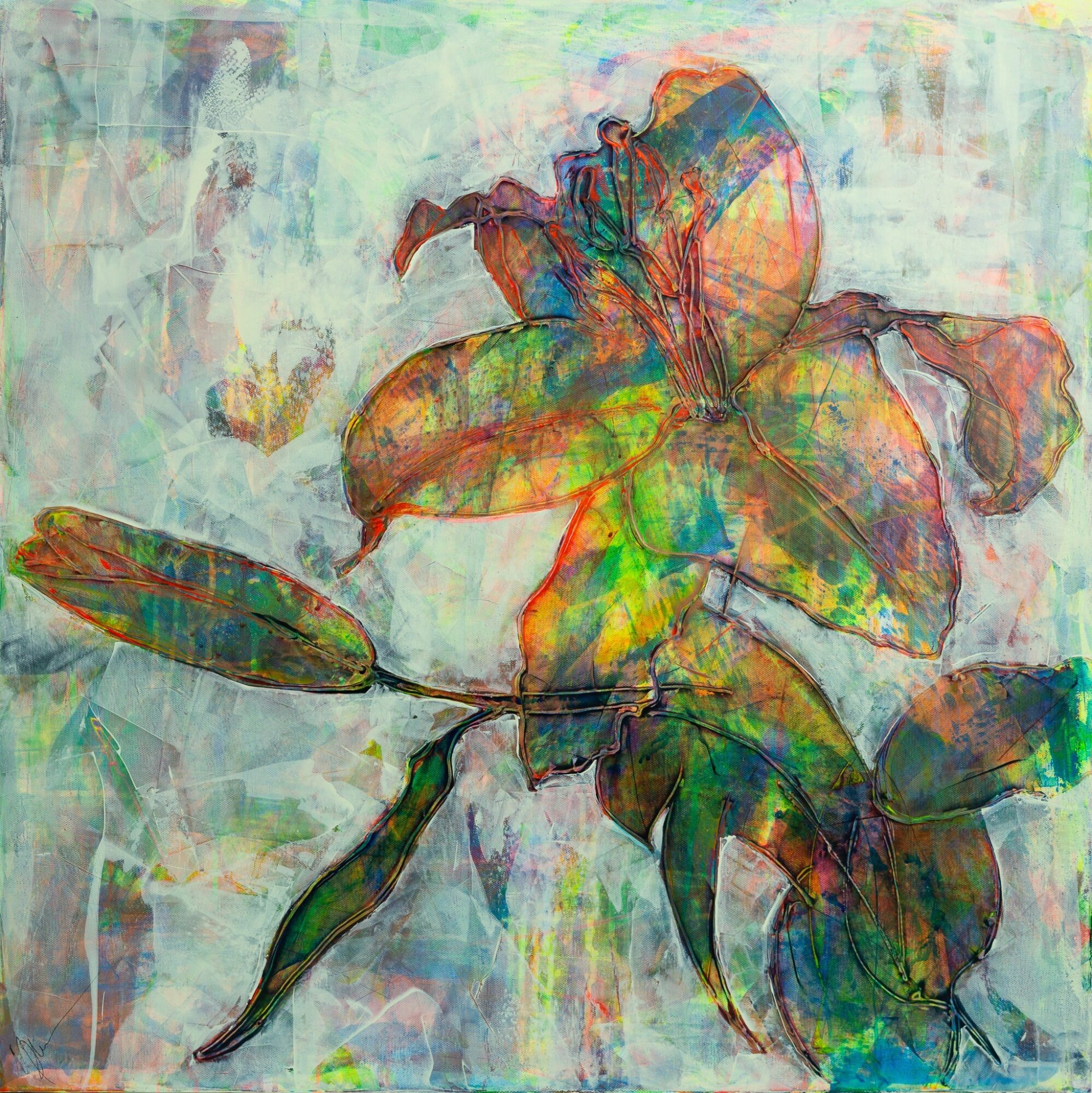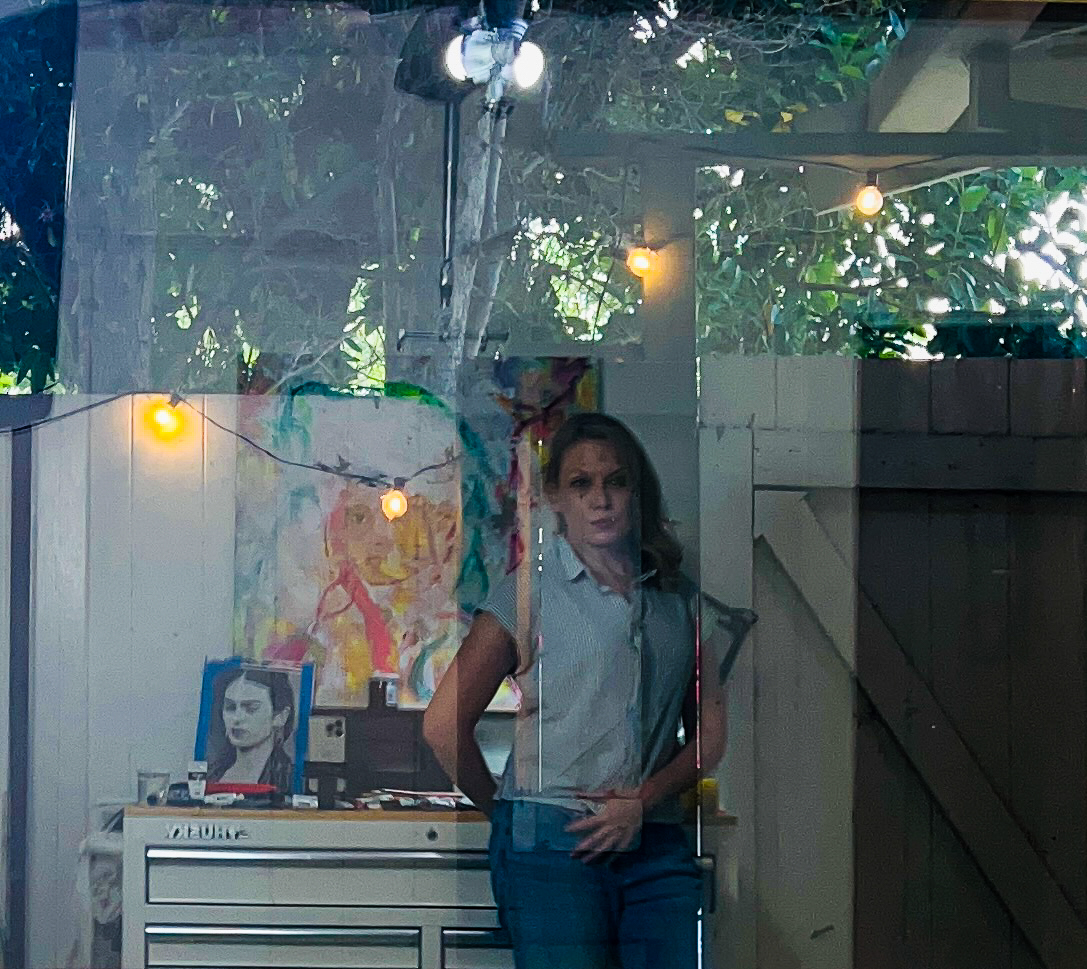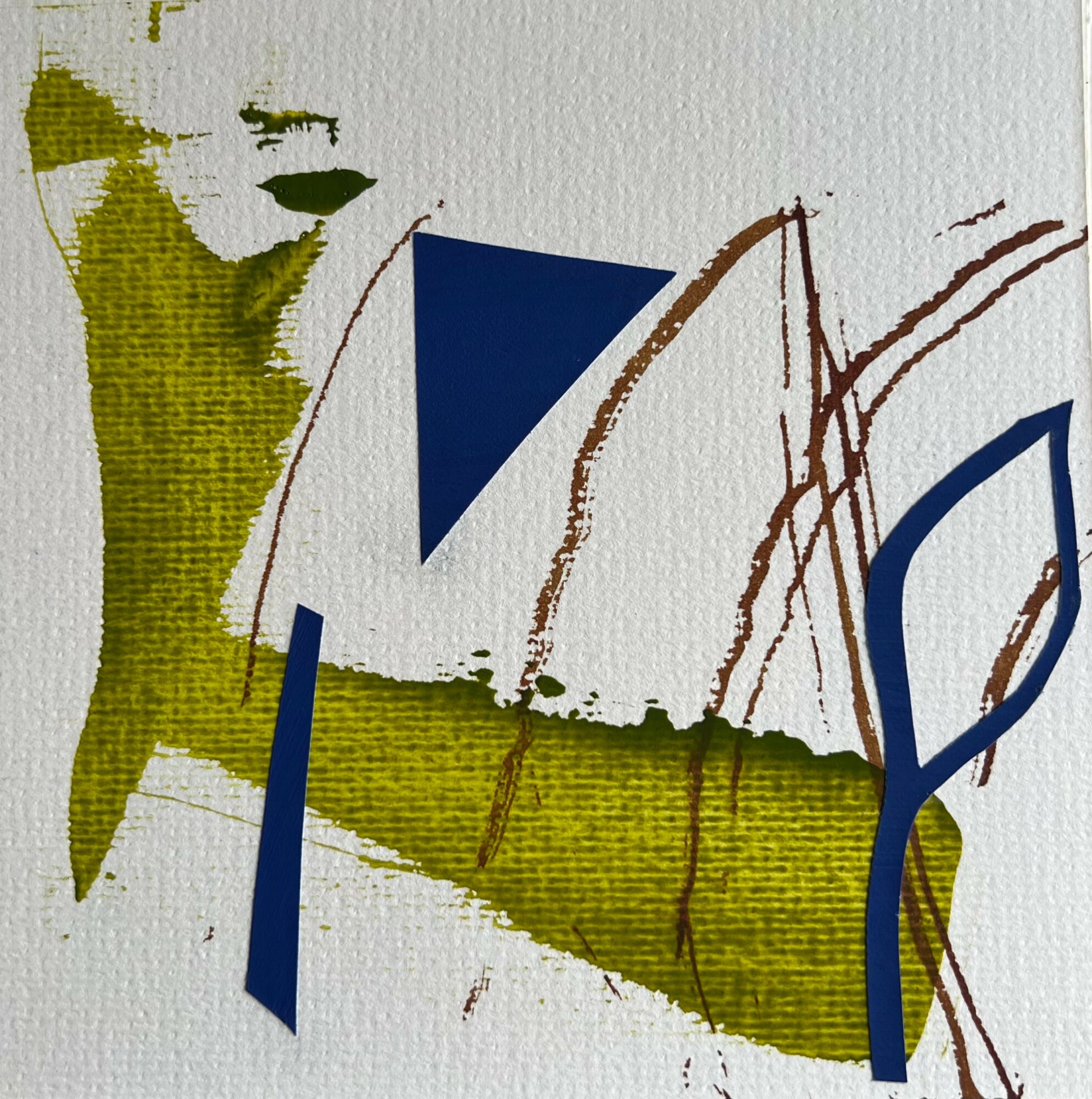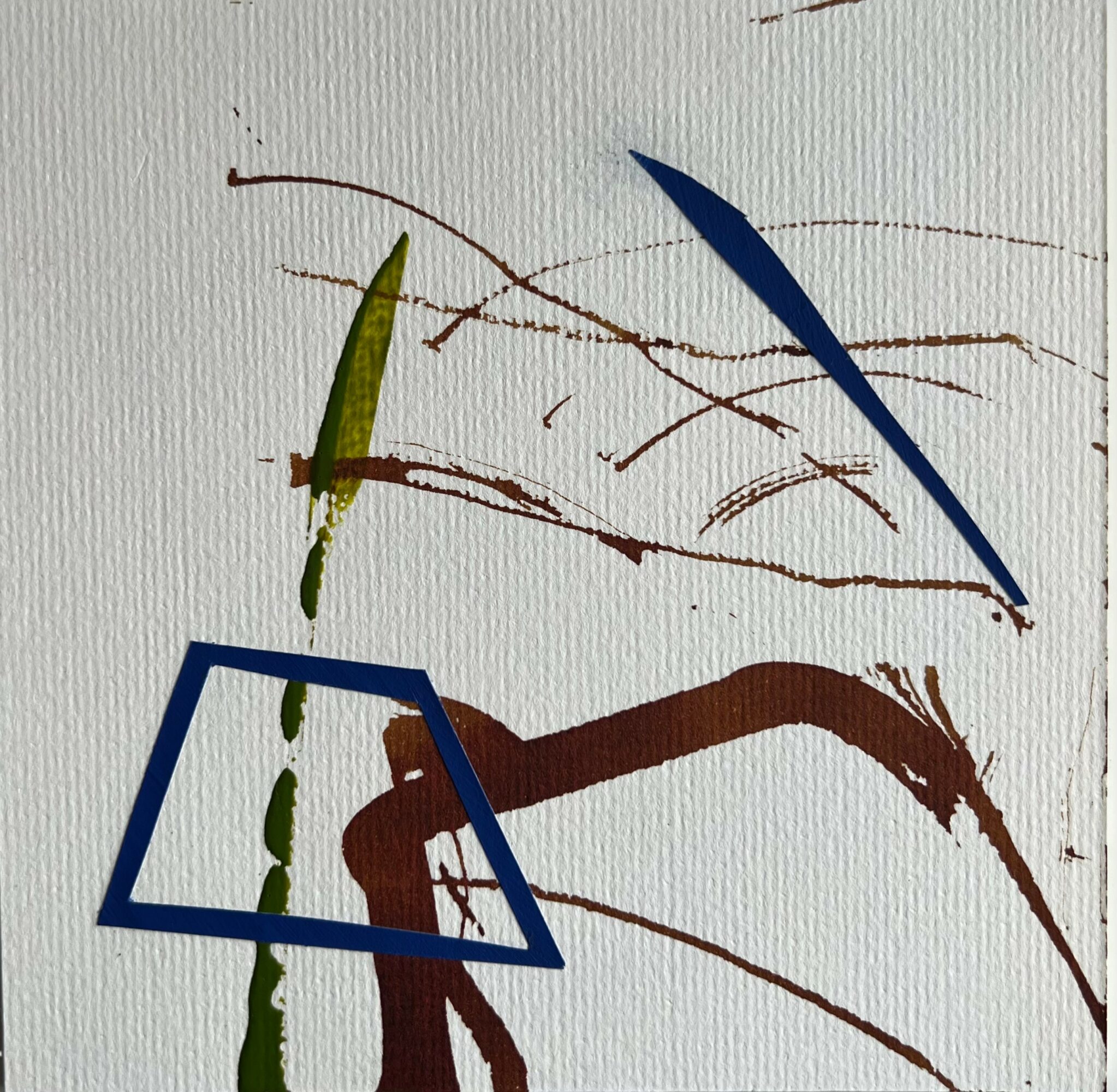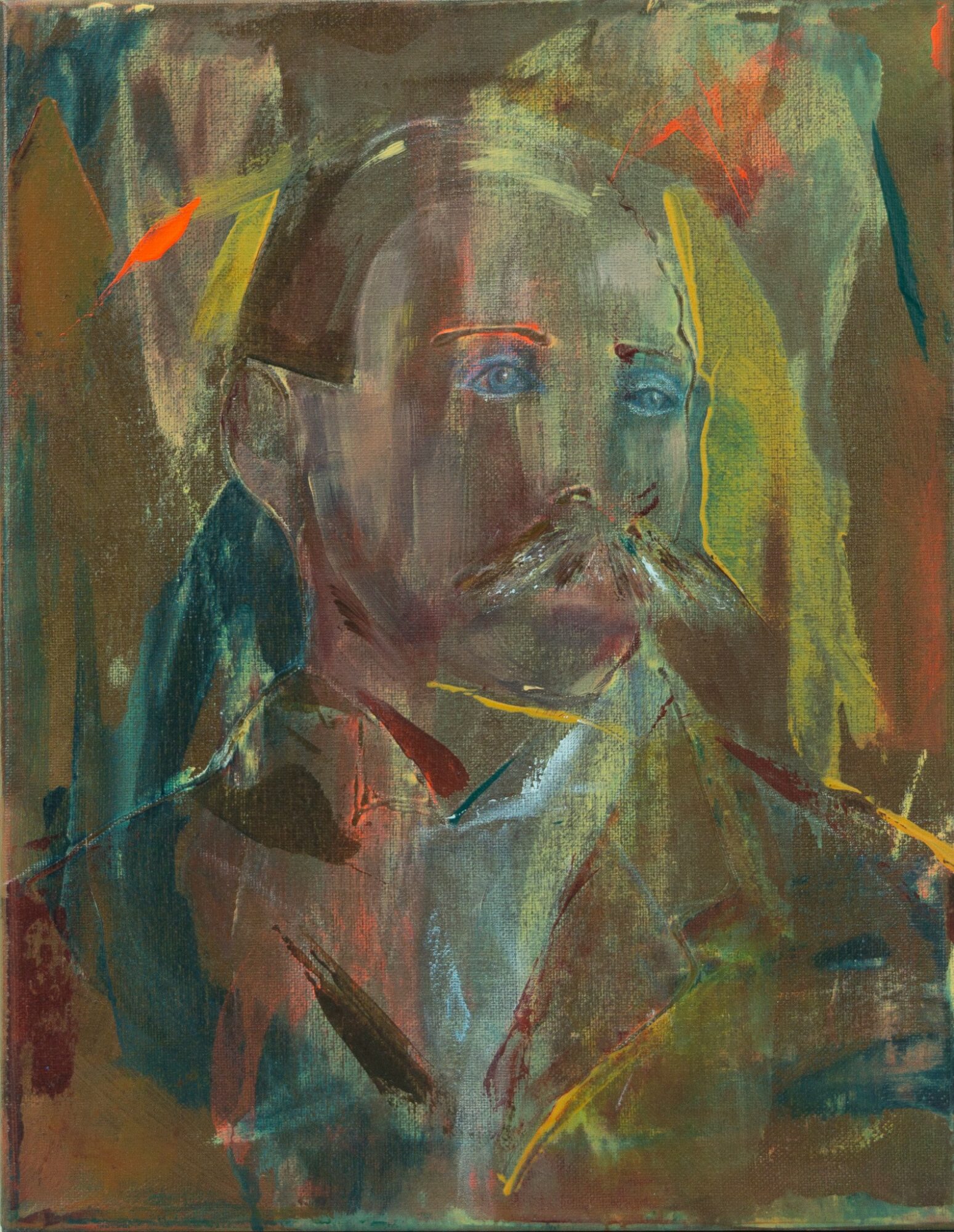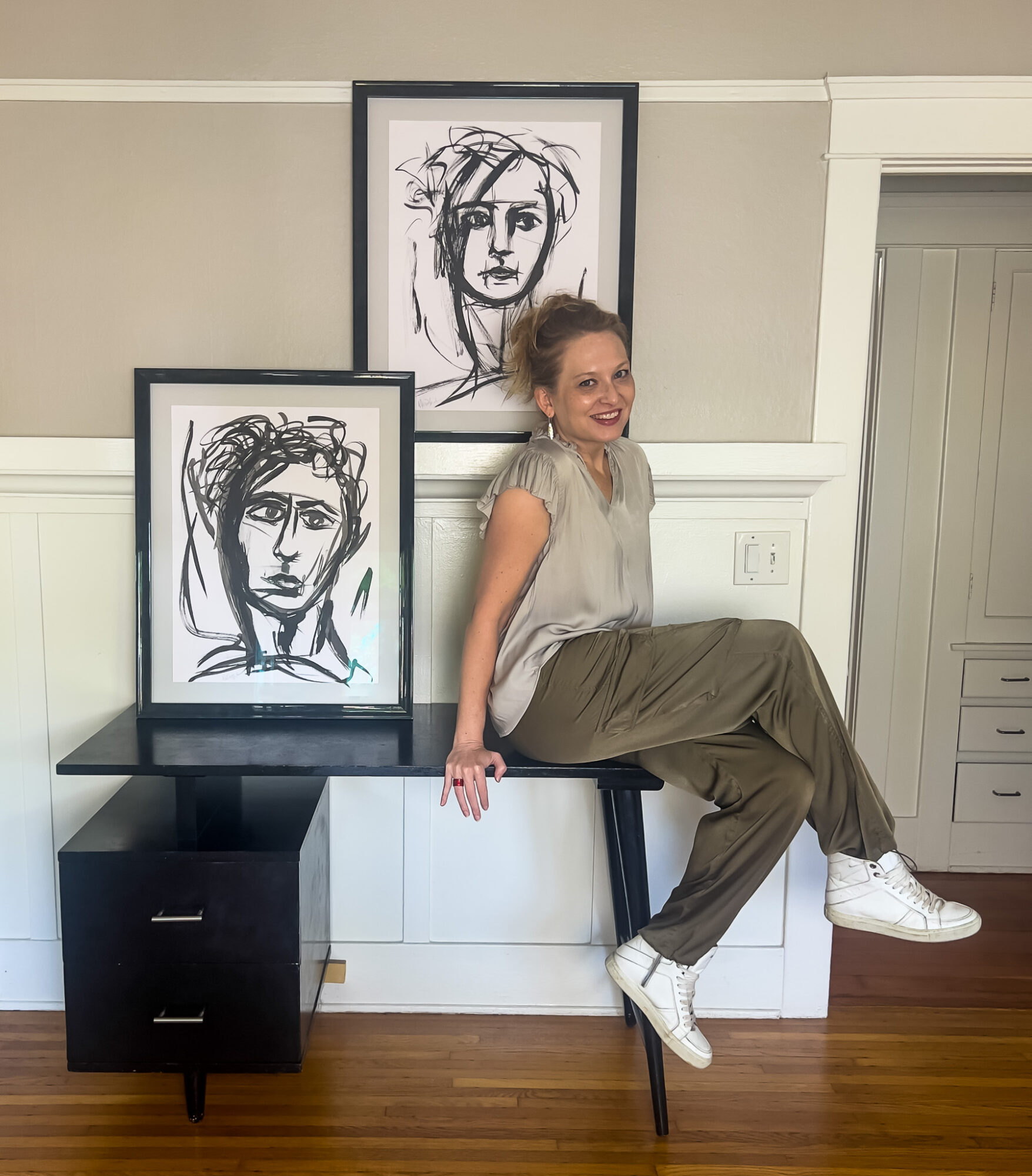

Today we’d like to introduce you to Melissa Thrasher.
Hi Melissa, it’s an honor to have you on the platform. Thanks for taking the time to share your story with us – to start maybe you can share some of your backstory with our readers?
I came to LA to work in television—writing and producing non-fiction shows. That was my world for a long time: fast deadlines, long days, pitching ideas, wrangling stories. But in between gigs, I started painting. I took some classes at Otis, mostly just to give myself something creative that didn’t depend on anyone’s approval. No notes, no gatekeepers—just me and the canvas. And that felt like real freedom. I grew up on the Great Plains and in the Rocky Mountains, so LA’s proximity to wild nature and its openness—culturally, energetically—really spoke to me. And painting gave me that same feeling: spaciousness. Presence. I’d get completely lost in it, hours gone by without even noticing. At first, I kept it to myself. It felt personal, like a private dialogue. But as I started sharing my drawings and paintings with people I trusted, something shifted. I realized that art doesn’t really come alive until it’s seen. That’s when it began to feel less like a hobby and more like a path. Becoming a professional artist wasn’t some sudden decision—it was more like following a quiet thread, one that led me deeper into myself with every mark, every moment I showed up.
Alright, so let’s dig a little deeper into the story – has it been an easy path overall and if not, what were the challenges you’ve had to overcome?
If the road is smooth, is it really yours? I read something recently that said, “If you can see the path in front of you, it’s not your path.” That made me laugh because it resonates so much with what my experience has been: one step at a time. Even though I had a full career before this—one that looked successful on paper—I believe it was meant to lead me here. It’s all the same path, really. My path. The hardest part has been accepting that.
I resisted calling myself an artist for a long time. Even in a creative city like L.A., there’s still this underlying stigma around being an artist—especially when it comes to stability or legitimacy. I internalized a lot of that. I had to come to terms with the myth versus my heart’s desire—my soul’s calling. There was a lot of fear in that. Fear around money, around being taken seriously, around what it meant to say out loud, “I’m an artist.” Accepting that, and taking action anyway, has been the greatest challenge of my life. But the more I’ve leaned into it, the more at home I’ve felt—in myself and in the world.
Appreciate you sharing that. What else should we know about what you do?
I’m a painter. My work moves between abstraction and representation, often anchored in emotional presence and subtle forces we don’t always have language for. I tend to work in series—each collection emerging from a specific question, experience, or internal shift. Some pieces are more figurative, like my portraits; others, like Subtle Forces, are entirely abstract, built from layered gestures and unexpected turns. Flowers of Life came from a period of transition, and explores impermanence and renewal through the fading beauty of floral arrangements in my home.
What sets my work apart is the process behind it. It’s devotional—not in a religious sense, but in the way I show up to it daily, open to what wants to come through. I work at the edge of chaos and structure, allowing intuition to lead while still honoring form and tension. That space—in between control and surrender—is where the most alive moments happen in the work. I’m not chasing perfection or cleverness; I’m looking for resonance. And if someone feels a shift, a pause, or a sense of recognition when they experience the work, then I’ve done what I came to do. Collectors have told me the work makes them feel seen, or that it holds a stillness they recognize. Sometimes they even name the exact feeling I had while making it. That’s when I’m reminded that art is a kind of dialogue—one that happens beneath language, in a space we all know but rarely speak from.
We’d love to hear about how you think about risk taking?
Risk is my middle name—at least, that’s how it feels most days. I’ve taken some big leaps, but they haven’t always looked dramatic from the outside. Sometimes the biggest risks are internal: telling the truth about what you really want, deciding to follow it, and doing it even when the outcome’s uncertain.
When I look back, some of the best times in my life came after taking what felt like the biggest risks ever: moving to LA to work in television, spending a year working abroad, and later, choosing to take my art seriously. That last one wasn’t a clean break or a full-time leap—it was a commitment to make space for it anyway. To invest in it emotionally and financially while still juggling other responsibilities. That felt like a quiet revolution. To me, risk isn’t always about blowing up your life (though I’ve done that too!). It’s about devotion. It’s about choosing the thing that keeps whispering to you, even when the world doesn’t offer guarantees.
Contact Info:
- Website: https://www.melissathrasherart.com/
- Instagram: https://www.instagram.com/thrasherart/
